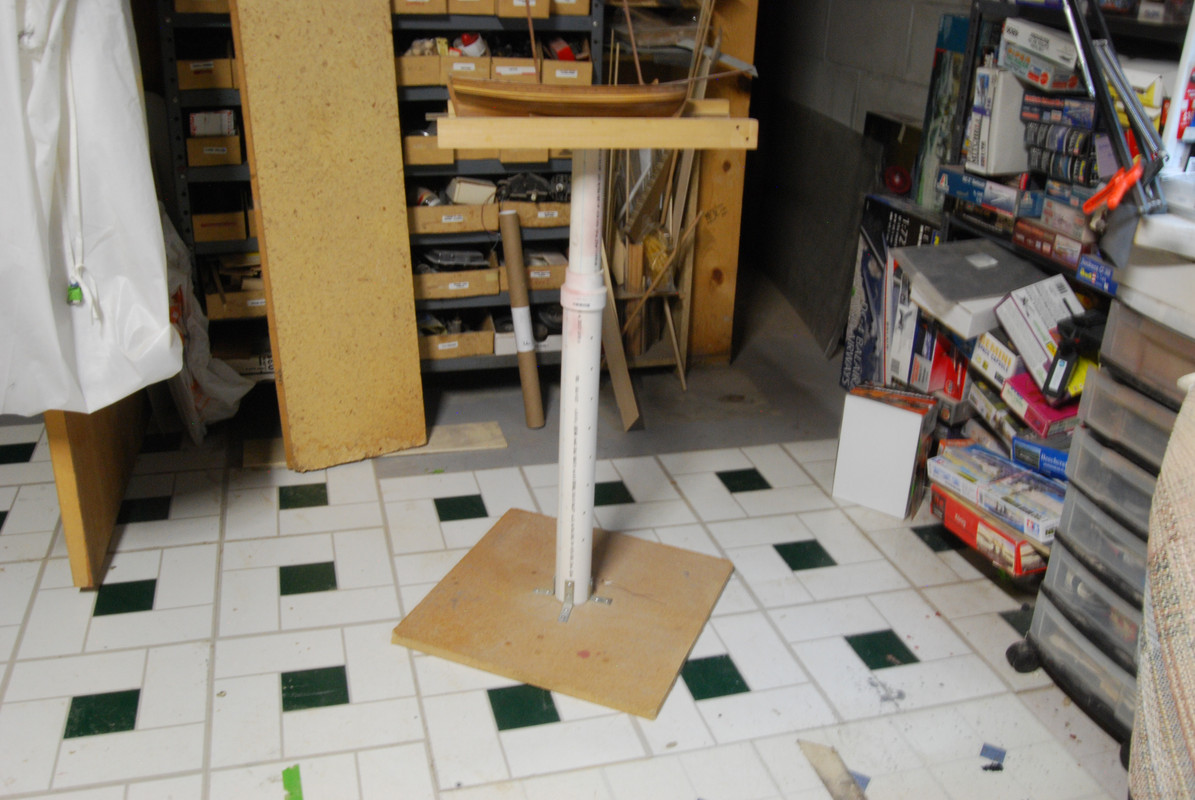Calling on all ship riggers. I am trying to rig a 1/96 Connie using Styren’s miniature rope. I seem to struggling with getting it out of its package and unraveling it without it becoming a knot! This is a 29’ foot length of string that is loosely laid out in a small zip bag.
Before I use it, I wind it around a 6"piece of cardboard. No matter how I handle that loose spool of rope; I end up with a mess of knots. I would really appreciate hearing about any solutions you might have.
Thank you
I’ll suspect that you did not have a grandmother who required you to hold yarn from a skein to be made up into a ball for future knitting.
All line has a natural “lay,” a way it wants to curl up. This is a natural byproduct of how lines are laid up–the various “bits” of the lines are given a twist, and then twsited around each other, and the friction of the “un-laying” keeping the line assembled.
The Syren line seems to respond well to being drawn, carefully, out and wound around something large & round–a sauerkraut jar or a 2-liter bottle. That allows enough “diameter” to not kink. Once on that large thing, it can be taken off onto smaller fixtures like bits of cardboard.
Doing this in two steps is time-consuming, but, is meant to keep the kinks out. Kinks lead back to snarls which then become yery expensive knots.
Well Capn Mac, I read your post, pulled out a package of Syren rope, wound it around a 28 oz bottle of Gatorade and finished within an hour; with one small entanglement! In the past I’ve easily spent two hours working the knots out!
Sir I very much thank you for your excellent advice. I feel like you have given me a new Life!
As the folks in my part of Texas say, “De nada.”
Not only for having knitting grandmothers, but also for having taken line of ships’ reels for use on deck (both natrual fiber and wire rope). One does not want to kink 5/8" plow steel wire rope (ranks up there with making long splices in steel wire, what with the length of the splice being proportionate to the wire diameter).
Flaking (or Flemishing) out lines wants respecting their “lay” especially if a person wants/needs them to “run” on demand.
In the days of sail, the anchor rode (also “roade”) might be drawn up out of the cable flat and flaked out on the deck even with the hawse pipe. That helps eliminate wear on the hawse as the rode pays out. It’s germane to remember that natural fiber line ought not be passed around a radius smaller than its circumgference (or a bit more than 3x diameter) lest the fibers break and weaken the line.
Having the anchor plunge to the bottom can over bend the hawse as it passes out of the hatch to the cable flat. (Also, this could wear down the lip of the hatch, as well.)
While tacking, the lines from the brace tackle might be flaked out rather than coiled on the belaying pin.
Isn’t estoterica fun? [:)]
Wait til he explains Marline.
LoL.
Not the marline so much as having to save it like Depression-Era tinfoil to male sennet [:)]
Here is a little fixture I made for ship rigging.

The idea is adjustable height to allow comfortable height to rest my hands on something close to the work area ( the sides of the table). There are two pieces of PVC pipe. Unfortunatly PVC tubes do not come on telescoping diameters, so a bit of work is required here. There are drilled holes an inch apart, which I put a brass road through at the point for best height. Atop the inner pipe is a u-shaped table for the ship, with strong sides to reast the heel of my hands on.
